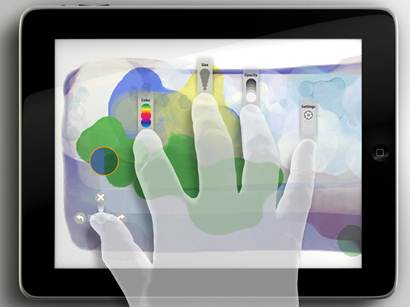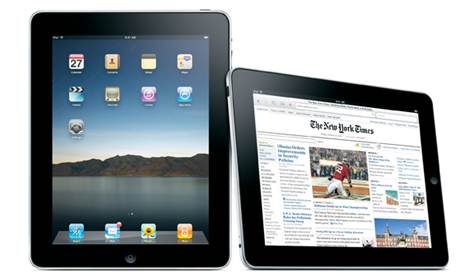Apple has drastically revolutionised the
way in which people interact with machines, starting with the iPhone. Of course
touch technology did not just appear out of thin air. Its roots go as far back
as the 1940s
In 1994, Bruce Tognazzini launched a
promotional video with his vision of the year 2004. His speculation: on 16
November 2004, Lady Diana would become a member of the British House of Lords.
Unfortunately, he was proven wrong since the princess died in the summer of 1997.
Of course, the main premise behind Tognazzini's "Starfire" is today a
reality. As noted by human interface experts, the video was not so much about
British royalty but more about the interaction of people and computers with the
help of tablets and giant multi-touch monitors. Of course the breakthrough in
touch technology only came to the general public in 2007 with Apple's first
iPhone. But the fact that Tognazzini could predict the far-reaching vision 13
years before it happened is neither genius nor coincidence, since the
technology can be traced back to the year 1948. At that time, Canadian
physicist Hugh Le Caine dealt not only with the radar and atomic technology but
also with electronic music instruments. As of 1948, he built the what will
known as the first synthesizer of the world and was equipped with a type of
touchpad. The touch-sensitive controls could be used, for example, to
continuously change the acoustic color. For that the trombone used a capacitive
touch technology.

Here, the sensors identified the
electrification current in an electrical field which is generated by a touch.
This principle incidentally is used even today, among other things by the
iPhone.
Multi-Touch: An Evolution

Yet it would be years later till other
scientists started contending with touch technology. Without a powerful and
affordable end device, however, the new control concept was hardly practical.
Nevertheless, in the mid-60's IBM and the Bell Laboratories involved themselves
into the technology. In 1982, a new type of touch system was developed at the
University of Toronto: it responded not just to "a single touch but to
multiple touch simultaneously", writes the Microsoft researcher scientist
Bill Buxton, on his home page. Even before that there were attempts to make
touch-devices accessible to the general public. In1972, the teaching computer
PLATO IV was used in schools and universities. In this, students and
undergraduates entered answers to the computer's questions via a touch on the
monitor screen.
As early as in 1983, Hewlett-Packard
offered its PC HP-150 with integrated touchscreen to private users. But the
sales numbers remained low. The laptops of the 90's with touchpad had more
success. Who was the first to come up with it is even today debatable. Psion admittedly
launched a laptop with a touchpad in 1989. However, the user had to tap at a
specific point to move the cursor forwards unlike later on when it was usually
done with a finger-swipe. This technology called GlidePoint was initially
undertaken by Apple and was implemented from 1994. From this point on the race
towards portable end devices started off. Thus in 1993, the first smartphone of
the world was introduced on the market: the Simon by IBM and Bell was equipped
with an interface that was controlled via single touch. Apple tried its luck in
the same year with a portable mini-computer called Newton. The Newton is now
known as the first Personal Digital Assistant (PDA). This device category was
not successful before US Robotics placed the Pilot in
As early as in 1983, Hewlett-Packard
offered its PC HP-150 with integrated touchscreen to private users. But the
sales numbers remained low. The laptops of the 90's with touchpad had more
success. Who was the first to come up with it is even today debatable. Psion
admittedly launched a laptop with a touchpad in 1989. However, the user had to
tap at a specific point to move the cursor forwards unlike later on when it was
usually done with a finger-swipe. This technology called GlidePoint was
initially undertaken by Apple and was implemented from 1994. From this point on
the race towards portable end devices started off. Thus in 1993, the first
smartphone of the world was introduced on the market: the Simon by IBM and Bell
was equipped with an interface that was controlled via single touch. Apple
tried its luck in the same year with a portable mini-computer called Newton.
The Newton is now known as the first Personal Digital Assistant (PDA). This
device category was not successful before US Robotics placed the Pilot in
1996, later renamed as Palm, on the market.
Yet Apple won the jackpot: the development from the Newton to the iPhone (2007)
and even to the iPad (2010) was quite apparent -technologically speaking,
neither of the two was a revolution but just an important progression on touch
technology. Apple boss Steve Jobs had simply landed on the right technology at
the right time — much to the chagrin of Nokia, the world market leader for many
years. In the field where the "iGod" was immortalised, there was where
Microsoft founder Bill Gates failed miserably: the development of his very own
tablet. On the other hand he had more success via another strategy. In 2007,
Microsoft launched a powerful computer with touch monitor. The surface
recognized the gestures of multiple individuals and was thought to be ideal for
use in shops and restaurants. From then on the development went blow upon blow:
Touch navigators are just as wide spread as touch operated machines. There are
even touch cook tops. And the future holds a lot of promise. Andreas Butz, a
professor of media informatics at the University of Munich believes that in a
few years there will be touch-sensitive sensors which will be able to give
different acknowledgements to the actions of the user. Sometime monitors would
depend on heat given off of a contact. More and more touch surfaces would be
implemented into the everyday: even today developers are working on
touch-interactive floors and walls. Further developments of the touch
technology would even surpass the visions of Tognazzini's "Starfire".